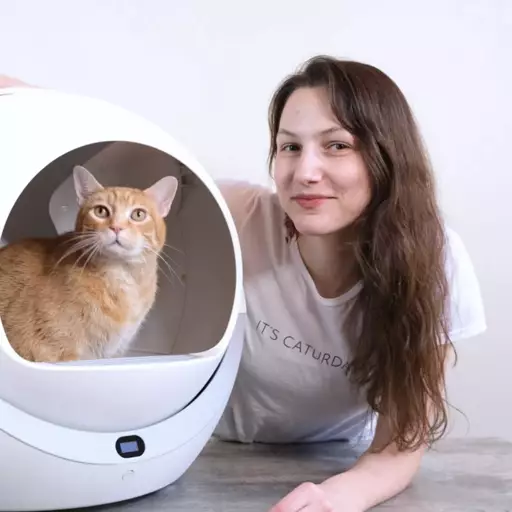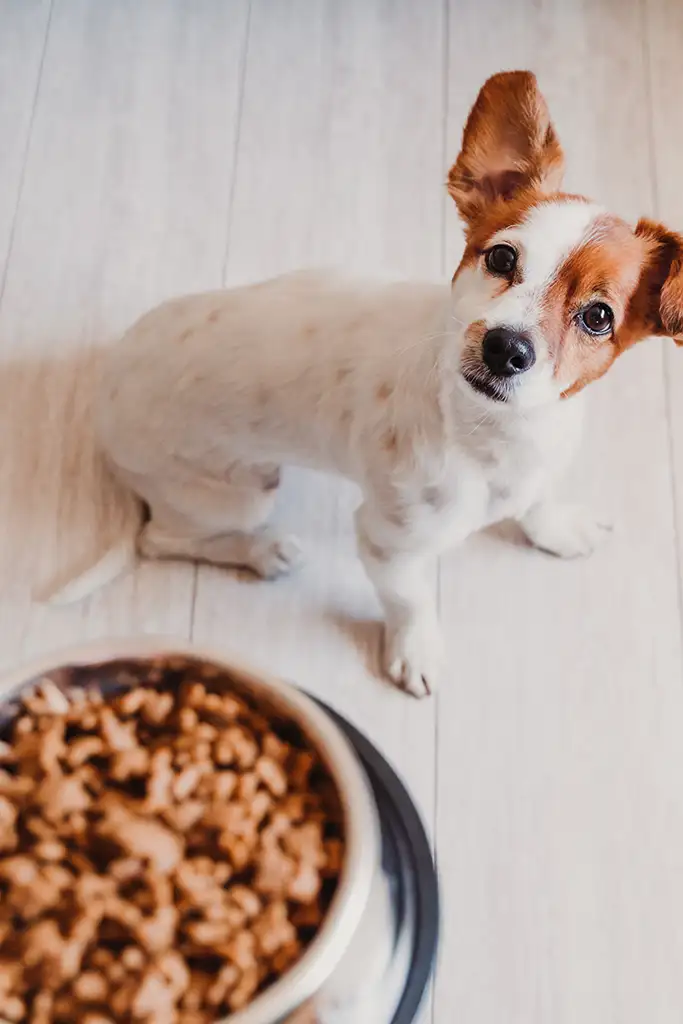Best Wet Cat Food 2024 – Our Favorite Canned Soft Food & Stews
Quick Guide
We obviously want the best for our cat in all aspects of their lives. After all, they help make us happy with their antics and companionship, so showing our appreciation for this through high-quality materials and products simply makes a whole lot of sense. This is especially important when it comes to selecting the right type of cat food. When it comes to wet food, there is an abundance of choices you can make. But which one is the right fit for your feline friend?
We’re here to help you answer this crucial question. In this article, we’ll examine the world of wet cat food, including breaking down some of the myths that have surrounded the style – myths that have made cat owners somewhat hesitant to go down the wet food route. We’ll also point out what you need to look for when you purchase wet cat food. Finally, we’ll share our choices for the top five best wet cat foods you can find on the market today.
Quick Look : Best Wet Cat Food in 2024
Why Does Quality Wet Cat Food Matter?
On paper, cat food simply provides sustenance for your feline friend. Dig a little deeper, and you’ll discover that a high-quality cat food can provide your kitty with essential nutrients and elements that can improve its quality of life, from improving the sheen in its coat to giving extra aid in fighting off illness and disease.
Ultimately, good cat food will help your pet achieve a goal of a long, healthy life. Ideally, your kitty will be your companion for a long time. According to the ASPCA, an indoor cat’s lifespan ranges from 13 to 17 years. While this is obviously good news for cat owners, it does put a touch of pressure on them, as they should feel charged with providing their pet with the means necessary to reach this goal.
Wet Food vs. Dry Food
It used to be that wet food, or canned food, was considered a poor choice for a cat’s needs. The moisture-rich option was almost considered a junk food of sorts for the feline set, as it was thought that it lacked in as many nutrients when compared to dry cat food.
This is not the case. In fact, there have been some circles that have begun to rally around a notion that wet food is the preferred option for feline sustenance. These claims point to concerns relating to the consumption of dry foods with links to urinary, joint, kidney, and blood sugar issues.
Arguably, the biggest myth underscoring the debate between wet and dry cat food focuses on the cat’s teeth. Dry food has long been thought by many to be a strong ally in keeping your kitty’s teeth clean. However, this has started to be supplanted by a belief that dry food can do more harm to a cat’s teeth than good.
The reason for this has to do with the teeth’s design. On the surface, a cat’s sharp, pointed teeth seem ideal to bite down on dry kibble. Yet these teeth are designed to bite and chew raw meat, which is substantially softer and more malleable than dry food. When a cat bites down on a piece of kibble, it can shatter and spread throughout the cat’s mouth. Sometimes, these shards get stuck between a cat’s teeth, providing bacteria with an open invitation to fester. When this happens, some serious dental issues can potentially arise.
Sometimes, these poor teeth conditions can lead to even worse issues. Dental bacteria could enter the bloodstream of your pet, an act that could potentially cause a wide range of more critical issues, from joint inflammation to internal organ infection.
Because wet food is moist, this potential hazard associated with dry cat food does not exist. While this doesn’t preclude you from making sure your kitty’s teeth are in tip-top shape – teeth cleaning is and always will be an essential component of the grooming process – it may be the one factor that swings you in favor of purchasing the wet stuff.
The Benefits of Wet Cat Food
Wet cat food is gentler on your feline friend’s teeth, but that’s just one of the benefits the substance has to offer. It turns out that the canned cuisine provides a few unique benefits for you to consider.
For instance, wet food has a higher moisture content. This makes a lot of sense, obviously – it’s called “wet food” for a reason. This added moisture can help your cat hydrated with more efficiency. It can also help drop the chance of kitty developing a urinary tract issue down the road.
This extra measure of moisture is critical. Cats are predatory beasts, which is why you may see them bring you a “gift” in the form of a bird or mouse. When they pick at this prey, they’re getting liquid content at the same time.
Because of this instinctual process, they tend to drink fewer amounts of water than other animals. Since it’s not uncommon to assume you’re going to try to discourage your kitty from pouncing on prey, the added moisture in wet food can act as a replacement to their curtailed predatory tendencies.
Wet cat food also tends to contain a greater concentration of protein. Remember, your cat is a carnivore, and it should be treated as such. But feeding them protein-rich wet cat food provides them with much more than a call back to their natural culinary instincts. It gives them a substantial boost in day to day bodily function.
This boost can provide preventative measures against a wide range of issues, from weight loss to immune system deficiency.
Again, wet food has dry food beat in this category. According to the website Vetinfo.com, wet cat food consists of 40 to 60 percent protein on average. Dry food, on the other hand, only clocks in at an average of 33 percent.
Of course, let’s not forget about the one element that may be of great interest to your pet – taste. Cats tend to be far less finicky when it comes to dining on wet food than then dry food. While this could lead to issues pertaining to your kitty’s weight if left unchecked, if properly monitored, you can be practically assured that your feline companion will be content with its food choices.
Wet Food and a Cat’s Life Cycle
There’s more to buying wet cat food than just picking up a can that looks potentially appealing to your buddy. There are several elements to consider, and one of the big considerations is its age.
A cat’s life cycle is broken down into three phases. The first phase is the kitten phase. During this time, your pet will need a diet that is high in fat and protein to help it develop its muscles, bones, and teeth. The fat is important to note here because kittens are extremely active and will need a boost in calories to keep up with their energetic demands.
The second phase of a cat’s life is its adulthood, a phase that could best be classified as its maintenance years. Ideally, you’ll be looking for food that’s lower in calorie content. If your kitty is losing the battle of the bulge, you’ll want to consider food geared toward weight control. If a cat’s weight is left unchecked, it can be more susceptible to heart disease, diabetes, arthritis, and other ailments that can negatively affect overweight humans.
The third and final phase of a cat’s life cycle is its senior years. An older cat will be more sedentary, so they’ll need wet food that contains the one-two punch of low fat and highly digestible proteins. The latter elements will make it easier for their internal organs to handle the breaking down of food, including the creation and disposal of waste.
What to Look for When You Buy Wet Cat Food
As is the case with anything you purchase, reading the label is something that should never be ignored. Thankfully, when it comes to purchasing wet cat food, you don’t have a whole lot of complex hoops to jump through. A cat’s diet can be relatively basic.
There are four items that should be part of any wet cat food you pick up for your pet. The first – and most obvious – component should be protein. The label may not specifically say “protein,” but it should drill down to provide you info on the protein type. A label that says “meat” should not suffice here. Look for specifics, such as beef, tuna, lamb, or chicken.
Taurine is another important item to look for when shopping for wet cat food. This is an amino acid whose function is perhaps better defined by what happens when it’s not found in a cat’s diet. Without a consistent amount of taurine, your cat could be more susceptible to an eclectic range of conditions from heart failure to blindness.
You’ll also want to seek out a cat food that contains plenty of water. Again, moisture is a key component of a cat’s overall health – one that ties to their natural predatory instincts. A can of wet food that’s rich in water will help your feline friend stay on top of the moisture game.
Finally, you’ll want to make sure your can of wet cat food contains a good number of vitamins, minerals, enzymes, and fatty acids. A solid combination of these elements will collectively provide your cat with a boost in its long-term health. It will also go a long way into helping them reach their life expectancy goals.
What to Avoid When You Buy Canned Cat Food
Conversely, there are a few wet cat food ingredients that should serve as red flags when you go to purchase the product. As a rule of thumb, always avoid any product that contains the words byproducts, animal digest, bone meal, or meat on the label.
While the latter word may seem counterintuitive, keep in mind that you’ll want to seek out a specific type of protein on the label. Using “meat” on the label allows the manufacturer to use the word as a catch-all for a mix of meats culled from nefarious places. These meats would not be in you or your cat’s best interest.
Added sugars and corn meal are also two substances that should be avoided at all costs. Just like in humans, too much sugar in a cat’s diet can lead to an onslaught of ill-begotten health issues, up to and including diabetes. Corn meal, on the other hand, is nothing more than a filler and serves no purpose other than to lessen a cat food’s health benefits.
Other Things to Bear in Mind
Just because wet cat food tends to be a little more beneficial than dry cat food, this doesn’t mean that you should avoid the latter component altogether. In fact, nutritionists specializing in feline diets recommend that you roll with a mix of wet and dry food.
There are two reasons for this. Firstly, dry food is a much more convenient dining option, particularly if your cat tends to have self-feeding tendencies. Wet food is meant to be consumed right away – it can spoil within a day of its opening without proper refrigeration. Even if you do refrigerate the food, you can only keep it for roughly three days or so before bacterial contamination begins to form.
Secondly, lest we forget that variety is the spice of life. Just like us, if a cat is subject to eating the same thing day in and day out, they could become rather bored. Rotating between wet and dry cat food will keep your kitty engaged when it’s time to eat. If you go about things carefully, you can also set a carefully curated rotation of minerals and vitamins to provide your cat with an even more balanced diet.
Whether you’re buying wet cat food or dry cat food, always make sure you check the food’s expiration date. If you’re feeding your feline spoiled food, they can get sick. You’re going to be the one that will clean up the mess if they do get sick, so you may as well be proactive here.
Reviewed: The Best Wet Cat Food
Now that you’re aware of the benefits of wet cat food – and what you should be mindful of as you go shopping – it’s time to look at the best wet cat foods on the market. We’ve done the homework for you and narrowed things down to the five products we feel provide your feline friend with the best wet cat food experience on the market.
As you go through the list, keep in mind that each product comes with its own plusses and minuses. These pros and cons should be carefully weighed before you make your final decision.
Wellness Complete Health Turkey & Salmon Formula
The first thing that jumps out about the Wellness Complete Health Turkey & Salmon Formula is that it is grain-free. This instantly eliminates any concern you may have regarding the amount of excess filler this can of wet cat food may contain.
More importantly, this is a cat food packed with loads of nutrients your cat needs to retain optimal health. Each helping serves up a generous dose of omegas, antioxidants, vitamins, minerals, and that all-important taurine. These elements combine to formulate a foundation that leads to the support of strong muscles, appropriate energy levels, healthy coat, and general immunity.
Of course, your cat will appreciate the can’s blend of turkey and salmon. You’ll appreciate this blend as well, since both are items that you wouldn’t mind your feline friend enjoying.
Pros:
- Grain-free recipe
- Rich in omegas, antioxidants, vitamins, minerals, and taurine
- Blend of two top-notch proteins
Cons:
- A recent formula change has made some cats a little more finicky
- Origins of ingredients are slightly muddled
Go! Sensitivity + Shine Grain-Free Duck Pate Cat Food
Packed with a blend of fruit, vegetables, and duck – its lead ingredient – Go! Sensitivity + Shine Grain-Free Duck Pate is formulated to make sure your cat’s skin and coat remain at the top of its game. But this wet cat food stands out for reasons beyond making your cat look pretty.
The blend they’ve made here is loaded with antioxidants, which will provide your kitty with tip-top immune health. It is also cooked in duck broth, a tactic that provides the food with an abundance of moisture, ultimately helping your feline friend maintain optimal digestive and urinary health.
There are also zero grains to be found in the blend. There aren’t any by-products, growth hormones, or artificial preservatives contained in the mix, either.
This blend is also specifically formulated for cats that are prone to allergies, such as food sensitivities. This is not hyperbole, either – a team of pet nutritionists created the formula to ensure top-shelf help to sensitive felines.
Pros:
- Blend cooked in duck broth for additional moisture
- Packed with omegas for shiny coat
- Loaded with antioxidants for immune health
- Zero grains or artificial by-products
- Specifically crafted for sensitive cats
Cons:
- Some cats may not like the flavor
- Some owners may object to the use of carrageenan/kelp in the blend
BFF Tuna & Turkey Tickles Cat Food
It’s no secret that cats enjoy the taste of tuna. That’s what makes the BFF Tuna & Turkey Tickles such a winning option. Wild-caught tuna and turkey form a one-two flavor punch most felines will enjoy. Plus, the food’s broth-based gravy adds an extra dose of hydration, which will provide an extra dose of digestive and urinary health.
The formula for the cat food is also low in carbs and high in amino acids, vitamins, omega-3 fatty acids, taurine, and minerals. It also contains no grain, gluten, starches, or MSG. Finally, it’s packaged in easy-to-open pouches, making them an ideal topper for dry food for those that want to blend wet and dry food options at once.
Pros:
- Wild-caught tuna and turkey blend
- No grain, gluten, or by-products
- Broth-based gravy to promote hydration
- Easy-to-open pouch makes it easy to add to dry food
Cons:
- Some cats may find the blend too fishy
- Some cats may eat around the chunks
Instinct by Nature’s Variety Original Grain-Free Real Chicken Cat Food
Instinct by Nature takes its animal protein very seriously, which is evident in the Instinct by Nature’s Variety Original Grain-Free Real Chicken Recipe. The primary ingredient in this pate-blend is cage-free chicken, and there’s lots of it for your cat to enjoy – it joins chicken liver and turkey to make up 95% of the blend. Veggies, fruits, and other natural ingredients form the rest of the blend.
You won’t find grain, potato, soy-by products, or anything artificial in this can. Instead, you’ll find plenty of natural omega fatty acids to promote your cat’s skin and coat health.
Pros:
- 95% of the ingredient mix is cage-free chicken, chicken liver, and turkey
- No artificial preservatives or by-products
- Plenty of omega fatty acids to promote skin and coat health
Cons:
- Pronounced liver smell may turn some cats off
- Some people claim it looks more appealing to them than it does to their cats
Weruva Truluxe Mediterranean Harvest Cat Food
Fresh ingredients are the backbone of the Weruva Trulxue Mediterranean Harvest, and they’re not afraid to share this fact with the consumer. Their main ingredient isn’t just tuna – it’s wild-caught skipjack tuna. It’s a formula designed to promote a balance of vitamins, minerals, and taurine is something that should be considered mainstream for your cat’s health.
Each can is also power-packed with amino acids to provide a healthy exterior to compliment your cat’s healthy interior. Its broth-based gravy also provides sufficient hydration for urinary and digestive health. Plus, it almost goes without saying that this product is grain-free with zero MSG or GMOs.
Pros:
- Wild-caught skipjack tuna is the main ingredient
- Grain free with zero MSG or GMOs
- Broth-based gravy to promote hydration
Cons:
- Some cats turn their nose up at the blend
- Some people don’t care for the price










